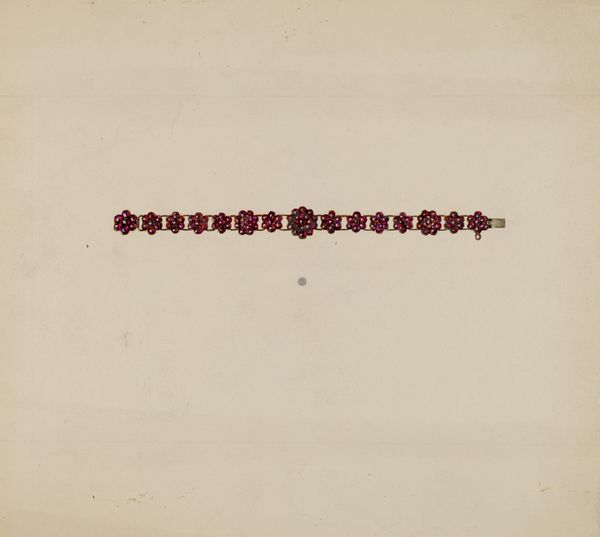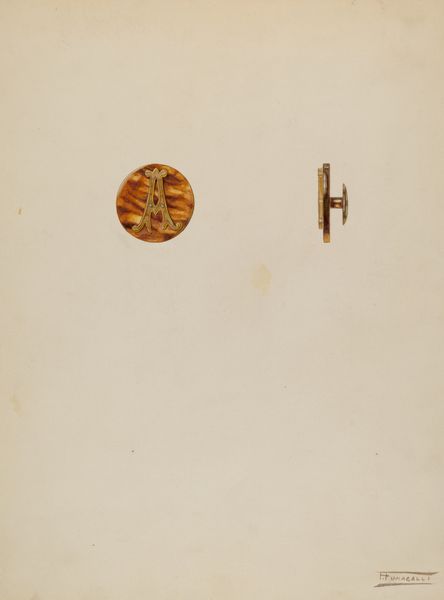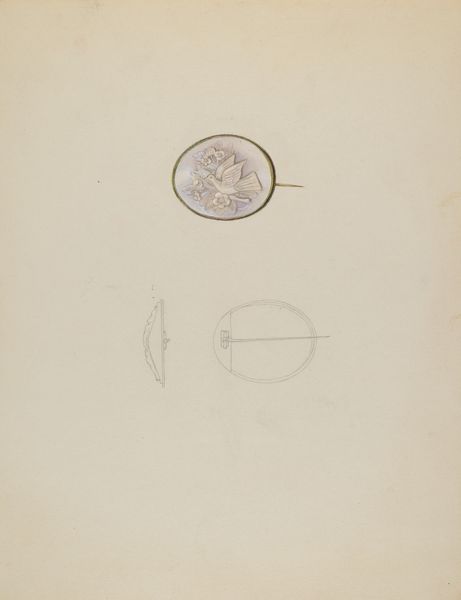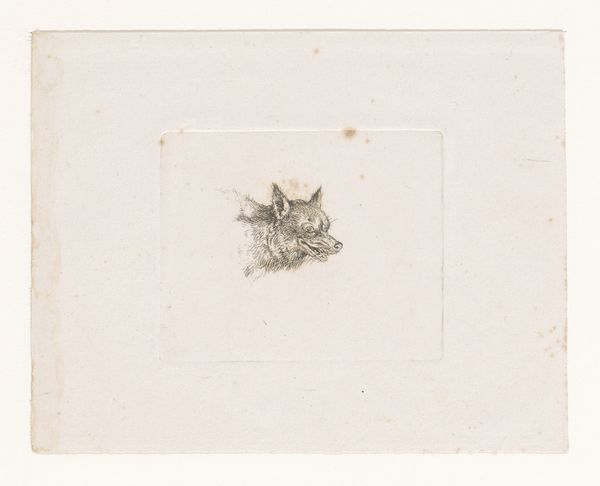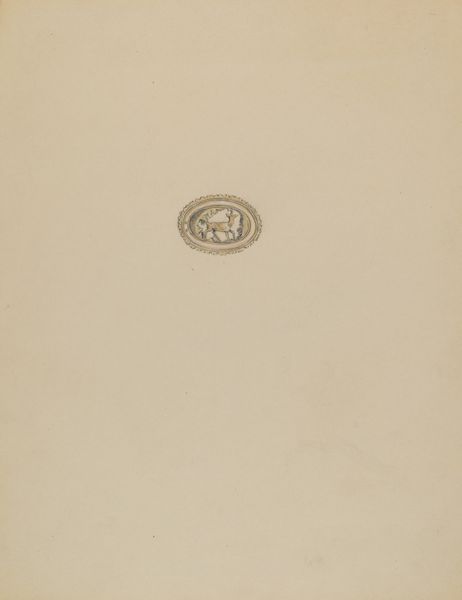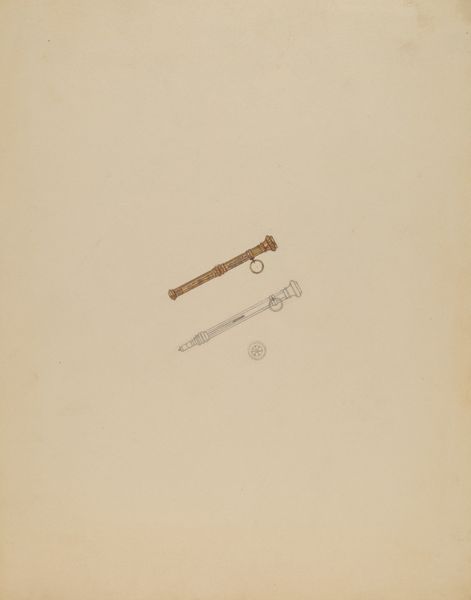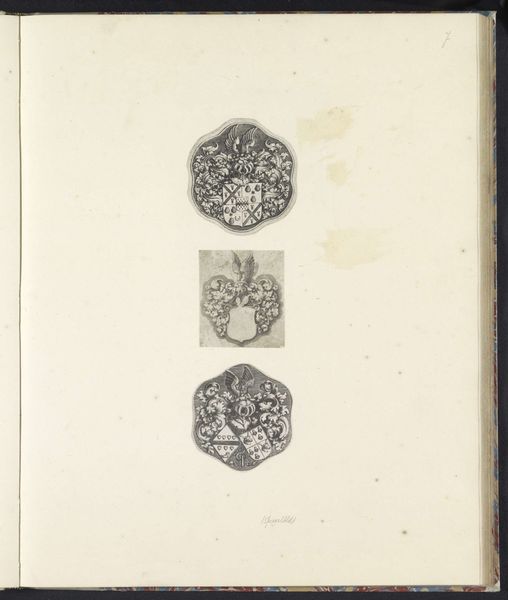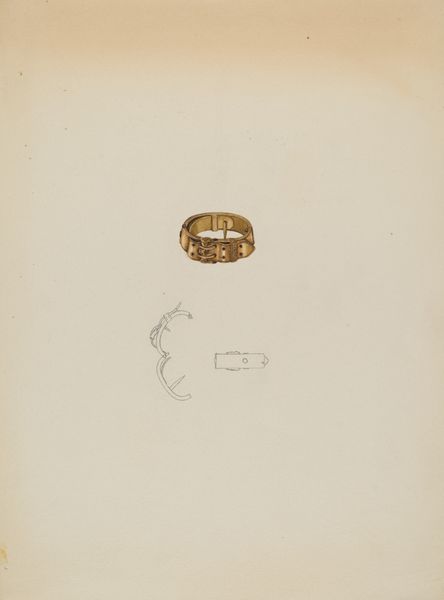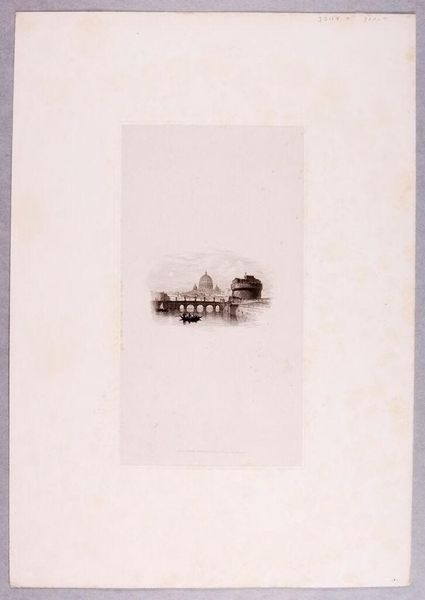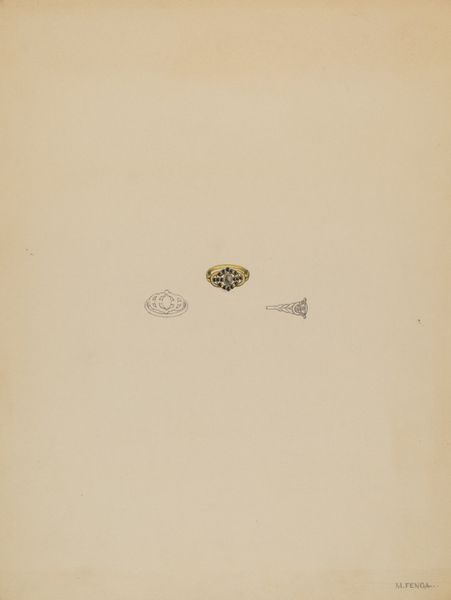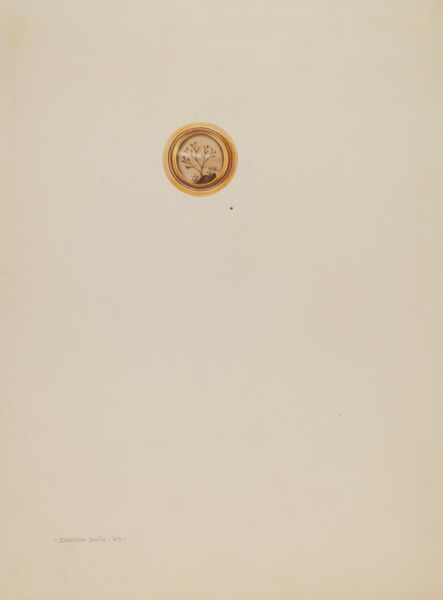
drawing
#
portrait
#
drawing
#
geometric
#
decorative-art
#
watercolor
Dimensions: overall: 29.7 x 22.9 cm (11 11/16 x 9 in.)
Copyright: National Gallery of Art: CC0 1.0
Editor: Here we have Gladys Cook’s "Bracelet," a watercolor drawing from around 1936. It strikes me as quite minimal and austere, even with the ornamentation. What stands out to you about this piece? Curator: I’m intrigued by the choice of jewelry as subject matter during the Depression era. Do you see a potential tension between the display of luxury, however modest in its representation here, and the social realities of the time? Editor: That’s a really interesting point. I hadn’t considered the social context. It almost feels like a quiet act of defiance or perhaps a yearning for better times. Curator: Exactly! And it leads me to wonder, who was this intended for? Was it a personal expression, a design study, or perhaps something else entirely? What kind of narratives were women allowed to construct around adornment and self-image back then? Editor: It's amazing how much can be unpacked from such a seemingly simple drawing. It's not just about aesthetics; it's about power, class, and gender roles, too. Curator: Absolutely. Consider the materials – watercolor on paper. It lacks the inherent value of the jewelry itself. What statement, then, does the choice of medium make about value and representation? It invites us to reflect on our contemporary consumption and materialism. Editor: I never would have thought about it that way! It's incredible how approaching art with social consciousness can open up so many layers of meaning. Curator: Precisely! Art isn’t created in a vacuum. By examining the artwork and its cultural environment together, we create new narratives.
Comments
No comments
Be the first to comment and join the conversation on the ultimate creative platform.

